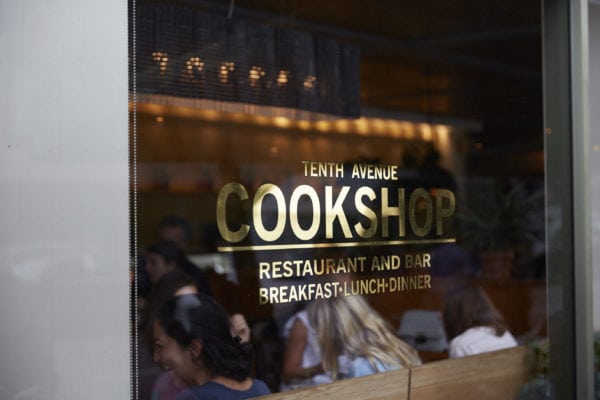PRODUCTS
The Restaurant OS
Are you a dining fan curious about how restaurants work? A restaurant pro curious what’s out there? A recent TechCrunch piece by Chris Caliz on TechCrunch does a good job of explaining the technology that’s currently available.
Important things to remember here: restaurant point-of-sale systems (POS) are not new, they’ve been around for a long time. What is new are the recent influx of new tools, systems, platforms, analytics, and other associated products, all working to play nice with current systems or, in some cases, take on the challenge of running all of a restaurant’s operations with one product.
As the piece shows, there are a lot of options available for every business need — inventory to waste management, hiring to payroll to analytics. The piece’s “general observations” do a good job of articulating exactly what’s happening in the industry — especially the needs and challenges from a restaurateur standpoint. But the real good stuff here lies in the advice for those considering or currently working on new products (and there’s a lot of them.) Specifically, a few good points:
- “Understanding the user journey and restaurant requirements should also help you understand that a normal consumer app MVP won’t cut it; you’ll need more thought and polish before you release.”
- “Restaurant tech is not at all like consumer app development.”
- “Be mindful that not everyone in a restaurant will speak the same language or share the same level of tech savvy.”
This is definitely a must-read for anyone building or thinking of building new restaurant tech, if only just a gut-check to make sure that things continue to move in the right direction. There’s definitely a lot of room for innovation here, but there are unique industry considerations that must be respected.
ALGORITHMS
How Restaurant Recommendations Work
Algorithms! This has moved from a buzzword to one that’s involved in basically every new tech product that hits the market. And although it became a buzzword, algorithms are really just recipes for solving problems. (Like: to calculate the importance of a webpage, take this data, cross reference with that data, add up the numbers and sort them.)
When the algorithm works well, though, it can be pretty impressive. When the algorithm gives you the perfect recommendation, it’s magical. I like to talk about Foursquare’s recommendations a lot, because of its volume of data — seven billion check-ins, location info that was voluntarily given. An Eater piece describes the logic Foursquare (and now Swarm) uses to make recommendations, and how it’s changed over the course of the product’s lifespan. The goal: “continue to get smarter and a little more human through small refinements.”
But there’s also the idea of the human touch, which, as an editor, I find important. Ideally, there’s a balance of algorithmic sorting and some human intervention. The piece goes on to mention recommendation service Luka, which uses some math and some humans, and ChefsFeed, which, at the opposite end of the spectrum from a machine-generated idea, recommends based on expert (chef) recommendations.
There’s a market for all of these ideas — and more. I see competition in this space as less of a competition for the best algorithm or the best technology and more of a competition for diner loyalty. Similar to having a go-to friend with all the best recommendations, tech products need to foster the same trustworthiness with users.
HMM
Are You a Restaurant or a Tech Company?
What constitutes a tech company? There are a lot of blurred lines right now — media company or tech company? Taxi company or tech company? But… restaurant or tech company? A recent Inc. article details how LA-based salad chain Sweetgreen operates more like a tech company, less like a restaurant. The chain raised VC funding, has an in-house tech team, an app, and an efficiency algorithm for ordering. (Remember when algorithms equaled math, not tech?)
The piece breaks down the pros and cons of identifying with the tech industry rather than the restaurant industry: you’ll attract talent and funding, but maybe you’re contributing to inflation of this “bubble” we keep hearing about? It goes on, asking VCs and tech insiders what constitutes a tech company. My takeaway: operating like a tech company does not equal being a tech company. That said, there are probably some lessons in efficiency and innovation all industries, including the restaurant industry, can take from successful tech. It’s an interesting question.
The online version of the article is good, but the in-print PDF is better. (Ha, that’s kind of ironic, isn’t it?)
MOBILE
Fast Food and Mobile Ordering
Mobile ordering is hot right now. How hot? In the next four years, it’s expected to account for ten percent of all fast food orders, to the tune of $38 billion. Business Insider has a quick look at the state of the industry, noting that restaurants that rely heavily on delivery (like the now-innovative pizza delivery empires) pay the most attention to new ordering technology. No surprise there. The piece also includes some interesting stats: nearly a quarter of Starbucks Q1 2016 orders were placed on mobile. One in four! That’s massive. (Doesn’t hurt that Starbucks links mobile ordering to its loyalty program. Win!) And Taco Bell, which has been a surprisingly awesome C+T case study, says in some cases, orders are placed via mobile at a rate 30 percent higher than those placed in-store. This is obviously a trend in fast food, and I won’t be surprised if we start to see similar numbers in fast-casual dining, too.
Digestifs
- On-demand private chef supplier Kitchit shuts down — TechCrunch
- Congrats! Here’s the full list of James Beard winners from this year — Eater
- GrubHub + Hyatt = room service, reimagined. — Chicago Tribune
- What you can expect on new restaurant menus, as predicted from analyzing James Beard nominees — ChicagoInno


